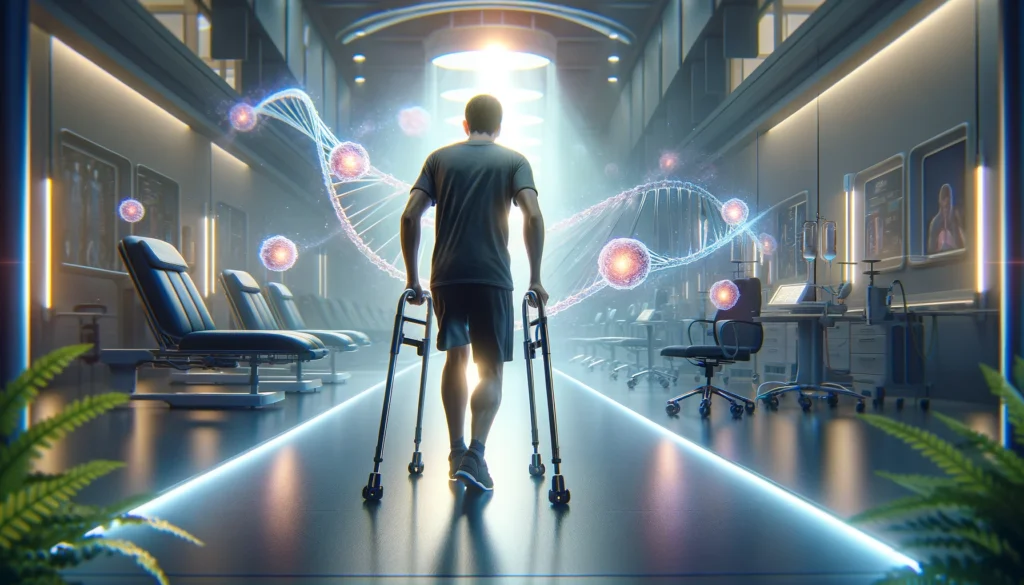In a groundbreaking medical milestone, a man paralyzed from the neck down following a surfing accident seven years ago has rediscovered the ability to stand and walk on his own, thanks to an innovative stem cell treatment. This astonishing development commenced with Chris Barr, the first-ever patient in a Mayo Clinic research study that extracted stem cells from his stomach fat, expanded them in a lab to create a staggering 100 million cells, and subsequently injected those cells right into Barr’s lumbar spine.
Over half a decade after receiving this life-altering therapy, Barr continues to gain more independence, enhancing his walking speed and overall functionality. “I never dreamed I would have a recovery like this,” he shared in an interview with ABC News’ Will Reeve. “I can feed myself. I can walk around. I can do day-to-day independent activities.”
As Mayo Clinic divulged new data illustrating the success of stem cell treatment in a clinical trial encompassing ten patients, including Barr, these revelations stoked excitement for this potentially transformative therapy. Seven of the study’s patients experienced increased strength in muscle motor groups and amplified sensation to pinpricks and light touch.
Despite three patients unresponsive to the stem cell therapy, the Mayo Clinic, based in Rochester, Minnesota, remains optimistic about future developments. “These findings give us hope for the future,” says Dr. Mohamad Bydon, a neurosurgeon and lead author for the spinal cord research study.
This Phase 1 research study, which commenced in 2018, culminated in the conclusion that stem cells are not only safe but potentially advantageous in treating spinal cord injuries. “This can be a milestone in our field of neurosurgery, neuroscience and of treating patients with spinal cord injury,” Bydon expressed, asserting the urgency of further research and understanding of how stem cells interact with the spinal cord.
Additional research is currently being conducted among a more extensive group of subjects in order to assess risks and benefits further. Barr, the pioneer of this study, enthusiastically admitted, “I’m just thrilled that there are people taking bold steps to try and do research to cure this. It’s been a wild ride, and it’s not over yet.”
In conclusion, this astounding news provides renewed hope and a potential game-changer for individuals suffering from spinal cord injuries, as well as their families. While research is still ongoing, the progress made by the Mayo Clinic study engenders optimism surrounding the future of stem cell treatments and their ability to restore functionality to patients once robbed of their mobility. The “wild ride” continues to accelerate as we enter a new era in the quest to cure spinal cord injuries.



